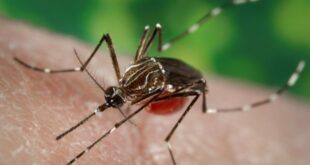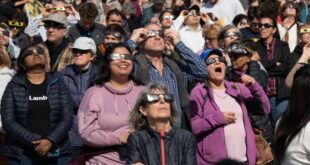Tires can leave behind 6PPD-quinone on pavement, which becomes toxic when exposed to sunlight.

Stream watchers in Metro Vancouver say they were shocked to find more than 40 dead coho salmon along the banks of a creek on the North Shore.
The West Vancouver Streamkeeper Society said there are concerns the dead fish found near Brothers Creek were caused by urban runoff, specifically a compound found in tires.
John Barker, former president of the society, says the discovery was made as part of an annual survey of Brothers Creek, which flows into the Capilano River just to the east of Park Royal Shopping Centre. Local high school students count returning adult salmon that will spawn in the creek and a tributary, Hadden Creek.
“It was a shock because it’s the first time in all my surveys, or in anyone else’s recollection, that we’ve had mortality of that amount,” said Barker, who co-ordinated this year’s program.
“These are all Pacific salmon. They all die after spawning but these were fresh arrivals from the ocean.”

The society says a contact with the Capilano River Hatchery suspects the pre-spawn mortality may be connected to 6PPD-quinone in the lower reaches of the stream
The society says tires can leave behind 6PPD-quinone on pavement. The chemical becomes toxic when exposed to sunlight.
Recent drought conditions may have played a role, Barker said, as dry weather allowed the chemical to accumulate on roads. There was not enough rainfall in September to disperse the chemicals prior to the arrival of salmon in West Vancouver streams around Thanksgiving. Heavy October rains then washed it into the storm sewer system.
“Rainwater off the streets is not directed to a treatment facility,” Barker said. “It’s all put into storm sewers, and those storm drains and storm sewers eject it straight into the creek.”
The chemical can be deadly to coho but do not affect pink or chum salmon, Barker says.
The West Vancouver Streamkeepers Society surveys salmon returns each year in Brothers Creek. This year the society was shocked to discover dozens of dead coho on its banks. John Barker is the past president of the society and believes this is being caused by urban run-off.
The society says recent stream surveys of Brothers and Hadden creeks suggest the danger may have passed as healthy coho have recently arrived.
Still, the dead salmon serves as a warning, Barker says.
He believes mitigation efforts are possible through the use of bioswales — vegetated channels that can catch, store and filter stormwater.
DFO monitoring concentrations of the chemical
Fisheries and Oceans Canada (DFO) said it is monitoring 6PPD-quinone concentrations in Brothers Creek.
“It’s not confirmed that the deaths have been caused by the chemical,” said Tanya Brown, research scientist at DFO in West Vancouver, during a telephone interview with CBC.
“We’re currently doing the analysis and should have results in the next two to three weeks.”
DFO has been monitoring over 40 creeks around Metro Vancouver, Squamish and Vancouver Island for the last two-and-a-half years and has found the presence of 6PPD-quinone consistently exceeding lethal concentration levels, especially during rainfall, according to Brown.
She said the organization is working to create a map of tire-related chemical toxic hotspots in salmon habitat across B.C.
“Cities and towns can then use the map to prioritize locations and build rain gardens, or bioretention cells on sites, which manage flooding and capture pollutants and contaminants from flowing into the creeks,” she said.
Concerns over toxic road runoff have also been raised on Vancouver Island, where stream watchers have said the material from an artificial turf field at a local school just outside Victoria is breaking loose and could threaten a nearby creek.
Gerald Harris, a director with the Friends of Bowker Creek Society, says the turf is made of old tires.
Erik Krogh, a professor of chemistry at Vancouver Island University, is among the researchers working with community groups to collect data about 6PPD-quinone.
He told CBC News it’s still “an open question” whether the rubber in artificial turf is dangerous, but he says it’s worth studying anything made with recycled tires.
“It’s especially important when you’ve got contact with these products and rainwater in close proximity to fish-bearing streams,” said Krogh.
With files from Kathryn Marlow and The Early Edition
*****
Credit belongs to : www.cbc.ca
 Atin Ito First Filipino Community Newspaper in Ontario
Atin Ito First Filipino Community Newspaper in Ontario






